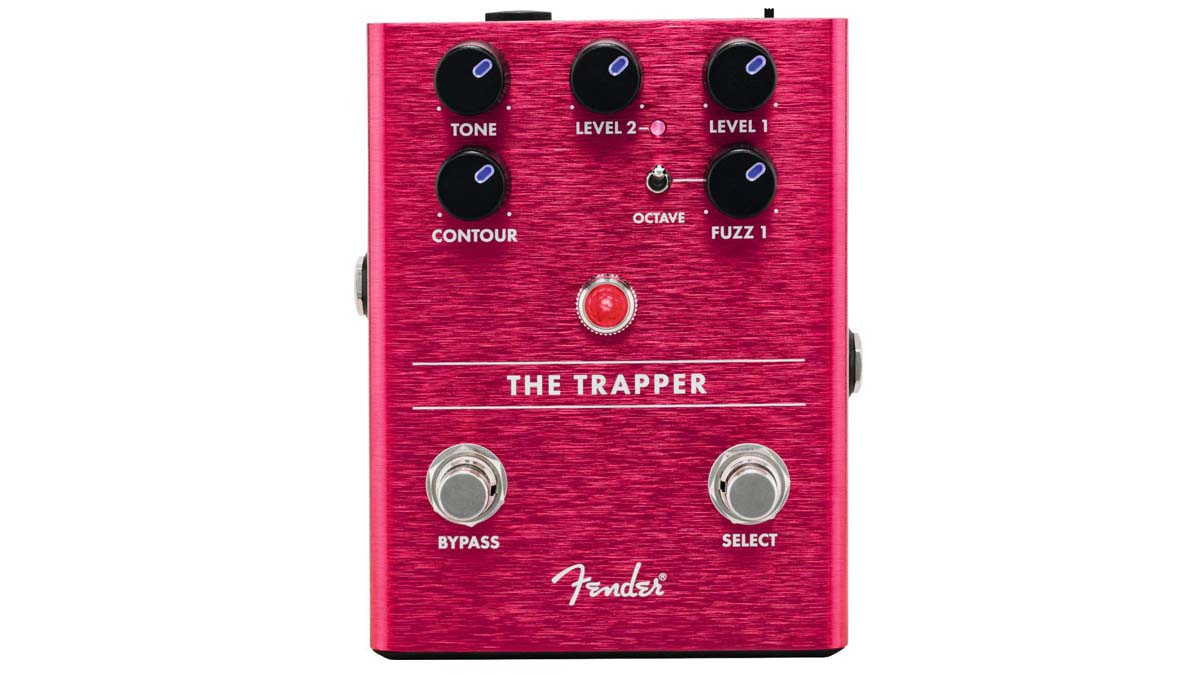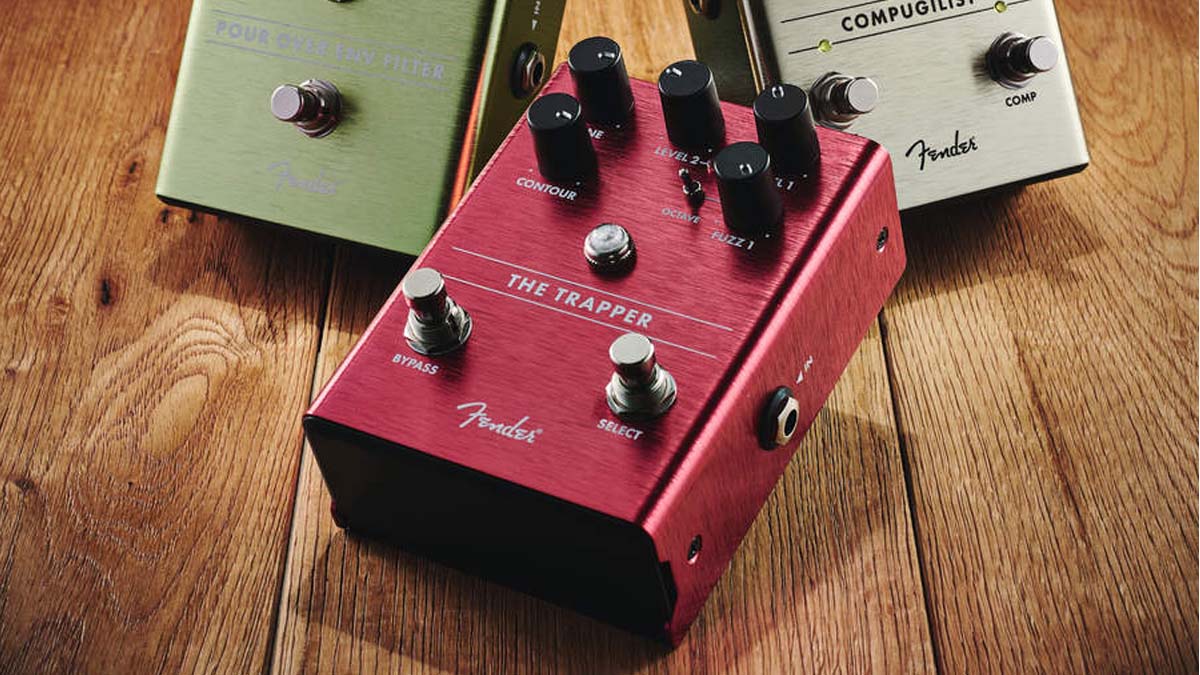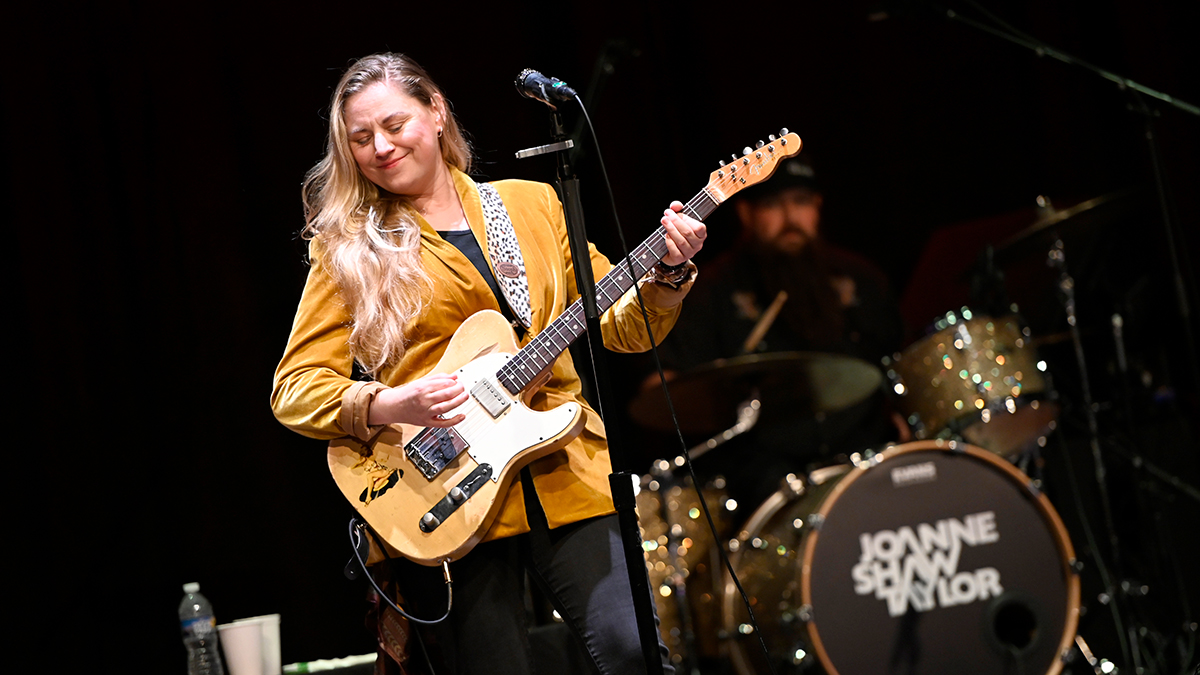Guitar World Verdict
The Trapper is a dynamic, versatile fuzz, with two discrete core flavours – one a little more feral than the other – and an octave function that opens up a world of quasi-synth overtones. It's a lot of fun.
Pros
- +
Three fuzz flavours in one box (if you count the octave fuzz).
- +
It's a bargain.
- +
The Fender pedal-build template remains convincing.
Cons
- -
Not much at this price.
You can trust Guitar World
What’s better than a fuzz pedal? Answer: two fuzz pedals. The Trapper isn’t exactly that, but it does feature two different fuzz voices and lets you footswitch between the two.
Fuzz 1, which has Fuzz and Level controls, is a smooth everyday silicon fuzz that is also capable of octave fuzz via a toggle switch that adds in that extra harmonic element.
The second fuzz is more full-on hooligan, and while it only has a Level control it also has an integrated noise gate, the idea being that you use your guitar volume and tone controls to bring out its variations – back off your guitar volume for sputter and glitch.
Both circuits feed an EQ array consisting of a Tone knob that rolls off treble and a Contour knob that has bass boost/treble cut at one extreme and the opposite at the other, with scooped mids at its centre. Between the two knobs you can dial in loads of tonal variation, from thick and woolly to eardrum-shredding spikiness.

Specs
- PRICE: $179.99 / £129
- ORIGIN: China
- TYPE: Fuzz pedal
- FEATURES: True bypass, 2x fuzz voices, selectable octave
- CONTROLS: Tone, Contour, Level 1, Level 2, Fuzz 1, Octave switch, LED kill switch, Select footswitch, Bypass footswitch
- CONNECTIONS: Standard input, standard output POWER: 9V battery or 9V DC adaptor (not supplied) 80mA
- DIMENSIONS: 95 (w) x 125 (d) x 64mm (h)
- CONTACT: Fender
All the latest guitar news, interviews, lessons, reviews, deals and more, direct to your inbox!
Trevor Curwen has played guitar for several decades – he's also mimed it on the UK's Top of the Pops. Much of his working life, though, has been spent behind the mixing desk, during which time he has built up a solid collection of the guitars, amps and pedals needed to cover just about any studio session. He writes pedal reviews for Guitarist and has contributed to Total Guitar, MusicRadar and Future Music among others.


